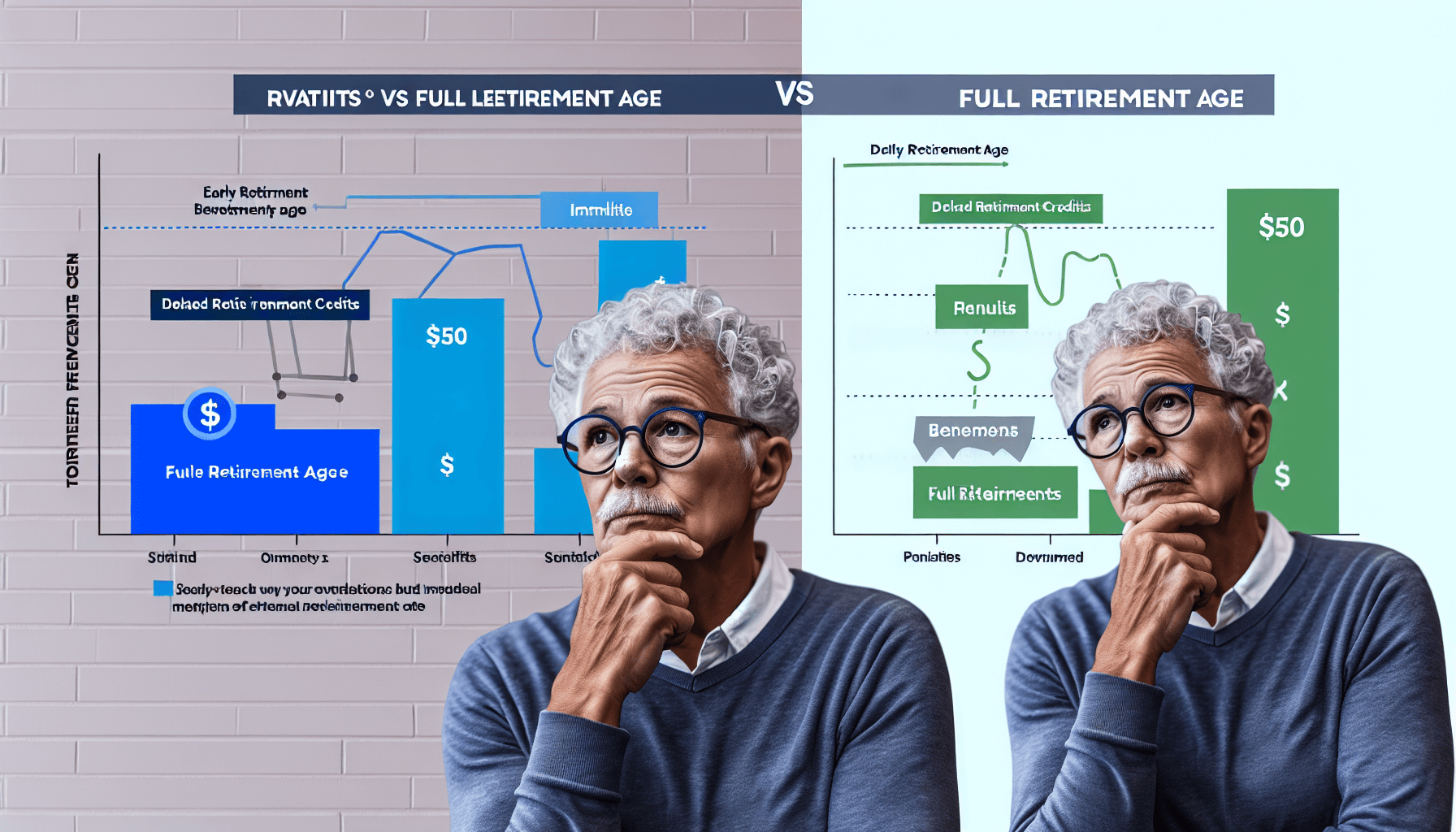How can you ensure you’re not leaving money on the table when it comes to Social Security in retirement? This article serves up actionable tactics for maximizing social security in retirement, tailored to boost your financial resilience as you navigate this new chapter.
From timing your claim for optimal benefits to leveraging tax strategies and work options, we’re here to demystify the process and arm you with knowledge that pays off. Dive in to secure the benefits you’ve earned without the complexity.
Contents
- 1 Key Takeaways
- 2 Understanding Your Social Security Benefits
- 3 Timing Your Claim for Optimal Benefits
- 4 Navigating Spousal and Family Benefits
- 5 Maximizing Income and Reducing Taxes
- 6 Utilizing Work Options in Retirement
- 7 Leveraging Divorce and Ex-Spouse Benefits
- 8 Seeking Professional Advice
- 9 Summary On Maximizing Social Security in Retirement
- 10 Frequently Asked Questions
- 10.1 How can I maximize my Social Security payout?
- 10.2 What is the best age to retire in order to maximize Social Security benefits?
- 10.3 How much money do you need to make to max out Social Security?
- 10.4 How do you get the $16728 Social Security bonus?
- 10.5 What is the full retirement age for Social Security benefits?
Key Takeaways
- Social Security benefits are based on your earnings history, with the amount you receive increasing with higher incomes and more years worked. Benefits are calculated using your highest 35 years of earnings.
- Claiming Social Security benefits is strategically significant; claiming before your full retirement age reduces benefits, while delaying beyond it can increase benefits by up to 8% per year until age 70.
- You can claim spousal and survivor benefits, which can be up to 50% and 100% of the primary earner’s benefits, respectively, with specific eligibility criteria and reductions if claimed before full retirement age.
Understanding Your Social Security Benefits

Designed to replace a percentage of a worker’s pre-retirement income, Social Security benefits play a crucial role in retirement planning. But did you know that the amount you receive is determined by your earnings history and the number of years you’ve worked? This means the more you earn and the longer you work, the higher the benefits you’re likely to receive.
Now, if you haven’t worked a full 35 years or have had years with low earnings, you might be wondering how this affects your benefits. Well, income-earning post-60 can potentially replace zero or lower-earning years, thus changing your benefit amount. The benefits are calculated based on your highest 35 years of earnings, ensuring that the calculation reflects the years when you earned the most.
Understanding these nuances about your Social Security benefits is the first step to maximizing them. But there’s more to it. Let’s break it down further.
Full Retirement Age
The full retirement age is a pivotal factor in determining when you’re eligible to receive full Social Security benefits. Here are the full retirement ages for different birth years:
- If you were born between 1943 and 1954, your full retirement age is 66 years.
- If you were born between 1955 and 1959, your full retirement age increases by two months for each successive year.
- If you were born in 1960 or later, your full retirement age is 67 years.
These ages determine when you can receive your full benefits.
Knowing your full retirement age is crucial as it impacts when you can claim benefits and how much you receive.
Average Indexed Monthly Earnings
The next piece of the puzzle is the Average Indexed Monthly Earnings (AIME). AIME summarizes up to 35 years of your indexed earnings, which are adjusted to reflect changes in the national wage level. If you’ve worked less than 35 years, zeros are added for the missing years, reducing your payout.
However, if you’ve worked more than 35 years, higher-earning years replace lower-earning years, potentially increasing your overall benefit. So, it’s crucial to ensure that your Social Security statement is error-free for an accurate calculation of the AIME.
Primary Insurance Amount
The final piece in understanding your Social Security benefits is the Primary Insurance Amount (PIA). This is the benefit you would receive if you begin receiving retirement benefits at your normal retirement age. It’s calculated using a formula that’s based on your AIME, with percentages fixed by law.
The actual benefit amount you receive can be higher or lower than the PIA, depending on when you claim benefits. The PIA formula adjusts to economic shifts, ensuring that it remains fair and balanced.
Timing Your Claim for Optimal Benefits

Now that we’ve covered how Social Security benefits are calculated, let’s discuss when you should claim them. The timing of your claim can dramatically influence the benefits you receive.
Delaying your claim can result in an accrual of delayed retirement credits, which increase your benefit amount by 8% per year up to age 70. This means that for each year you delay claiming Social Security benefits, your monthly payment increases by approximately 8% until you reach 70. Quite the bonus, right? But, let’s break this down further.
Early vs. Full Retirement Age
Choosing to claim Social Security benefits before reaching full retirement age has its implications. It can result in a permanent reduction of your benefit amount, with a greater reduction the earlier you claim. If your full retirement age is 66 (for those born between 1943 and 1954), and you choose to claim at 62, your benefits will be reduced by about 25%.
If the full retirement age is raised to 70, claiming at 62 would result in a 57% reduction. So, it’s vital to consider your full retirement age when deciding when to claim benefits.
Delayed Retirement Credits
On the other hand, delaying Social Security benefits past your full retirement age can increase your monthly payment. This is due to the accrual of delayed retirement credits, which can increase your benefits by up to 8% per year until you reach 70. This means that the longer you wait to receive Social Security benefits past your full retirement age, the higher your monthly benefit will be. These credits continue to be added until you reach 70 or start taking benefits.
And if you continue to work past your full retirement age, you can delay receiving Social Security benefits and earn delayed retirement credits.
Break-Even Analysis
There’s a break-even point in Social Security, where the cumulative benefits received from retiring at a later age equal the cumulative benefits received from retiring at an earlier age. Running a break-even analysis can help you determine when to claim benefits.
To calculate this point, simply divide the total amount of benefits foregone by the increased monthly benefit amount due to delaying. For example, if you delay benefits for one year, giving up $12,000, but gain an $80 increase per month, your break-even point would be 150 months or 12.5 years.
Navigating Spousal and Family Benefits

In addition to your own Social Security benefits, you may be entitled to claim benefits based on your spouse’s, or ex-spouse’s, earnings record. Understanding the rules and strategies for claiming these benefits can significantly boost your household’s retirement income.
Let’s delve into these benefits.
Claiming Spousal Benefits
If your spouse has a higher income, you might be eligible to claim up to 50% of their benefit. If you start benefits before your full retirement age, the percentage will be reduced. The good news is that claiming spousal benefits doesn’t affect the benefits of the spouse whose record the benefits are claimed from.
Survivor Benefits
If your spouse passes away, you could be eligible for survivor benefits, which amount to up to 100% of the deceased worker’s benefit. However, claiming these benefits before your full retirement age will reduce the benefit amount. Survivor benefits for children are also available until they turn 18 (or 19 if still in high school).
These benefits are also available indefinitely for disabled children if the disability occurred before age 22.
Family Maximum Benefits
The Social Security Administration has established a family maximum benefit, which restricts the total amount payable to a family based on a worker’s earnings record. This rule applies to the benefits received by:
- a spouse
- a surviving spouse
- children
- dependent parents
However, it does not include the benefits paid directly to the worker.
When multiple family members qualify for benefits on the same worker’s record, each benefit is proportionally reduced to ensure the total stays within the established limit.
Maximizing Income and Reducing Taxes

The journey to maximizing social security benefits doesn’t end at knowing when to claim or how much you can claim. It also involves finding ways to increase your income and reduce taxes on your Social Security benefits.
Let’s look at some strategies that can help you achieve this.
Increasing Your Income
Boosting your income can lead to higher Social Security benefits. This could be through continued employment or side hustles. Exploring income-generating opportunities post-retirement can positively impact your Social Security benefits.
Retirement financial advisors can assist in crafting strategies to maximize your Social Security income. They can also guide you on how to preserve your retirement income and extend the longevity of your retirement savings.
Tax Planning Strategies
A strategic tax plan can help minimize taxes on your Social Security benefits. For instance, Roth conversions during lower-income years can mitigate future retirement distribution taxes. Adopting a tax-efficient investment strategy and prioritizing withdrawals from tax-free accounts can help lower your Adjusted Gross Income (AGI) and Social Security taxation.
Donating required minimum distributions to charity prevents them from being counted as taxable income, which could beneficially affect Social Security benefit taxation. A financial professional can provide personalized advice on these strategies.
Utilizing Work Options in Retirement

You may wonder whether you can work while receiving Social Security benefits. The answer is yes, but there are some important considerations.
Let’s explore how working in retirement can impact your ability to collect social security benefits, as well as your social security payments.
Earnings Limits and Penalties
For Social Security beneficiaries under full retirement age, there are earnings limits. In 2023, the limit is $21,240. If your earnings exceed this limit, your Social Security benefits will be reduced. For every $2 you earn over the limit, your benefits will be reduced by $1.
So, if you’re planning to work while receiving benefits, it’s crucial to understand these limits and penalties to avoid any unpleasant surprises.
Working Beyond Full Retirement Age
What if you work beyond your full retirement age? There are no earnings limits once you reach your full retirement age. This means you can earn any amount without impacting your Social Security benefits.
Furthermore, working beyond full retirement age can lead to an increase in your Social Security benefits as your benefits calculation will be updated with higher recent earnings.
Leveraging Divorce and Ex-Spouse Benefits
If you’re divorced, you might be wondering how it affects your Social Security benefits. Well, you could be eligible to claim benefits based on your ex-spouse’s earnings record.
Let’s delve into this further.
Eligibility Requirements
To be eligible to claim benefits as a divorced spouse, you must meet certain criteria:
- You need to be at least 62 years old
- You must be currently unmarried
- You must have been married for at least 10 years
- You must have been divorced for at least two years
Restricted Application Strategy
Divorced spouses born before January 1, 1954 can utilize a strategy called the restricted application. This can help them maximize their social security benefits. This strategy allows you to claim spousal benefits while delaying your own retirement benefits, which can maximize your overall benefits.
Seeking Professional Advice
While understanding the basics of Social Security benefits is crucial, navigating the complexities can be quite challenging. That’s where professional financial advisors come in.
Importance of Expert Guidance
A financial advisor’s expertise can guide you through the complexities of Social Security filing statuses, helping you make informed decisions that best suit your unique financial situation. Their advice can be particularly valuable for those with complex financial situations, such as business owners.
Finding the Right Advisor
Finding the right advisor is crucial. Look for advisors with certifications such as the Certified Financial Planner (CFP), National Social Security Advisor (NSSA), and Register Social Security Analyst (RSSA).
Consulting with a financial advisor early, even before claiming Social Security eligibility, can lead to decisions that enhance your financial well-being.
Summary On Maximizing Social Security in Retirement
We’ve covered a lot of ground in maximizing Social Security in retirement. From understanding your benefits to exploring work options in retirement, every decision plays a significant role in your retirement income. Remember, getting the most out of Social Security isn’t just about claiming your benefits; it’s about crafting a strategy that suits your unique circumstances. So, embrace the power of knowledge and make your golden years truly shine!
Frequently Asked Questions
How can I maximize my Social Security payout?
To maximize your Social Security payout, consider working at least 35 years, understanding your full retirement age, and delaying claiming until age 70. Additionally, seeking spousal benefits and being mindful of any tax implications can also help increase your overall benefit amount.
What is the best age to retire in order to maximize Social Security benefits?
The best age to retire in order to maximize Social Security benefits is between 67 and 70. Delaying the benefits can increase the monthly amount significantly, up to over $3,300, but waiting past age 70 won’t result in any additional bonus payout.
How much money do you need to make to max out Social Security?
You need to make a salary of $160,200 to receive the maximum Social Security benefit. The administration averages your 35 highest earning years to determine your benefit.
How do you get the $16728 Social Security bonus?
You can’t get a $16,728 Social Security bonus as there is actually no such bonus for retirees. The amount is determined by a specific formula based on your lifetime earnings.
What is the full retirement age for Social Security benefits?
The full retirement age for Social Security benefits varies depending on your birth year, ranging from 66 for those born between 1943 and 1954 to 67 for those born in 1960 or later.






































